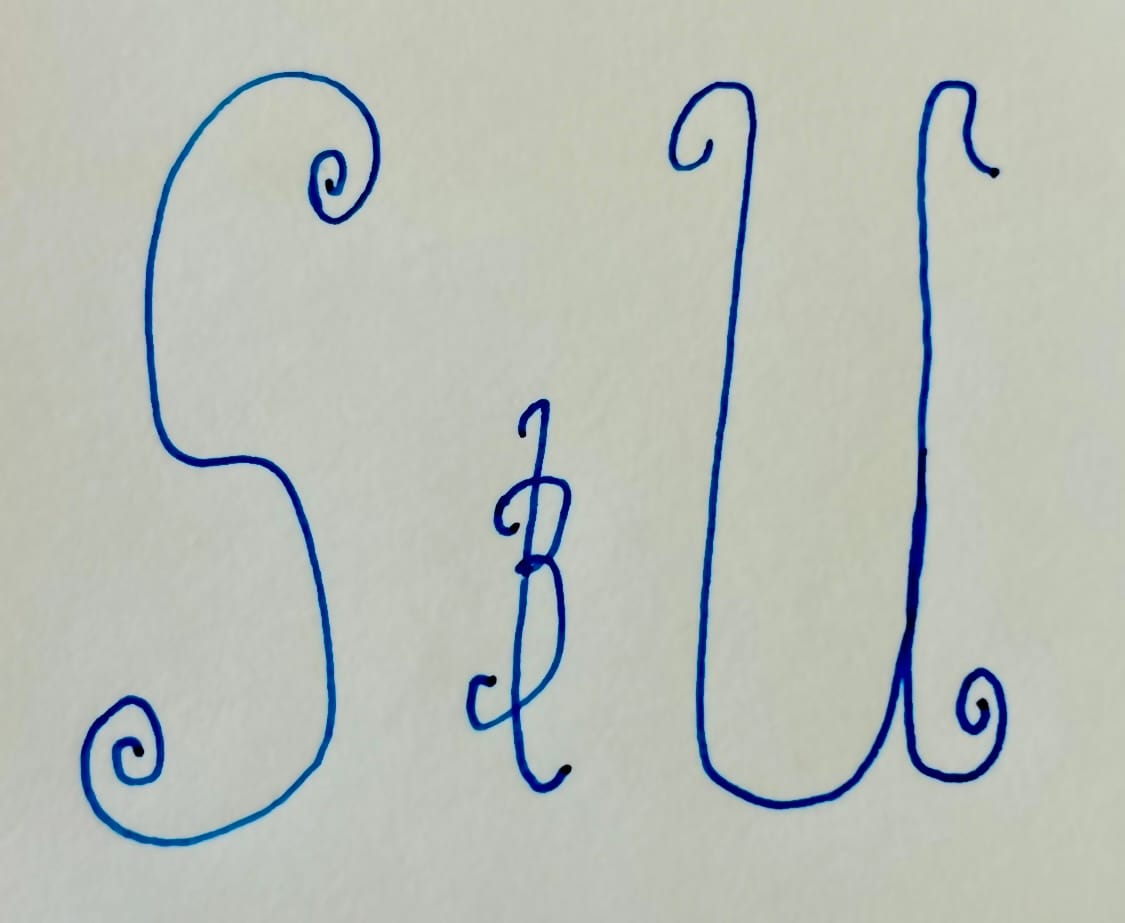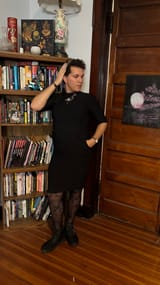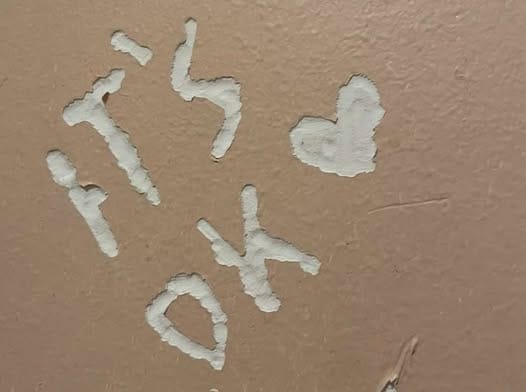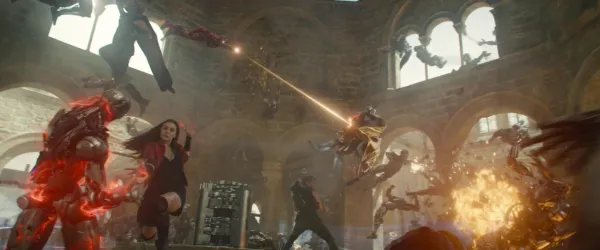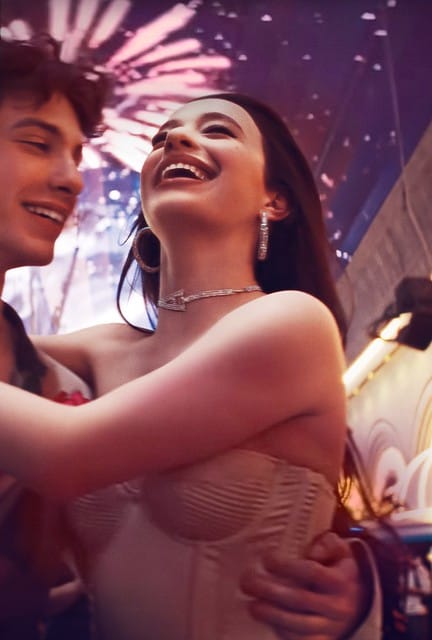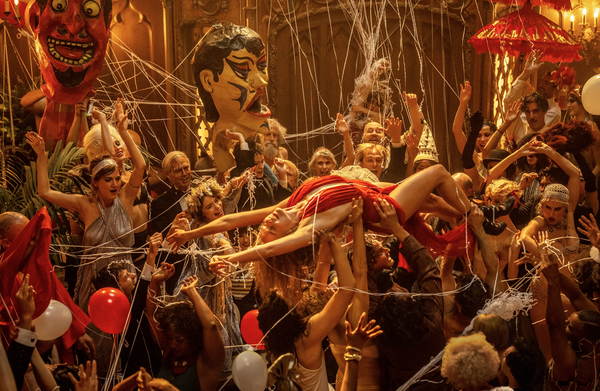Transgender dysphoria pinks, whites, and blues
Good morning! No real pop culture angle today, just felt like getting trans with it. Might happen occasionally since I want to document some of this.
It’s the least surprising thing on earth that every bit of small talk I’ve been part of recently has drifted toward a moment of “Hard year so far, huh?” so much so that I’ve started joking that asking someone how they’re doing comes with its own hedge. We laugh, and then I’ll see folks’ eyes track my pronoun pin or trans-colored one before they ask how I’ve been with an implicit, “but really.”
The truth is that the machinations of Trump round 2 weigh on me more than I’d like them to, both in a broad “I knew things would be hard but goddamn” way, and in the specific way his administration is going after trans people. I’m not in any direct danger among my trans siblings thanks to reliable and safe access to medical care, being out in all my social circles, and a personal and professional support system, but it’s still hard to not feel like things are precarious between the overt hostility of the executive orders and quiet insidiousness of erasing trans-centric language from government websites.
I know this isn’t a blast to read, but it’d be disingenuous to not talk about it. I’ve seen other trans creatives talk about how work on whatever is slow going because writing about your favorite stuff of 2024 with all this in the air can make you feel crazy, even with grounding context. My public writing slowed hard during Trump round 1 in part because of that; “lot of crazy stuff coming out of DC, but let’s talk about The xx,” and I didn’t even know I was trans then. But by 2017, 2018, signs were starting to show.
Something I wonder is if other trans people who come out as adults have what I’ve come to call “The Picture. The Picture is the one specific photo (usually a candid) that even at the time, even if it never found an intended target, still made you feel this visceral reaction of “That can’t be me.” I don’t mean the dismay of seeing yourself from a bad angle, or lamenting your size or a body feature–I’m talking about the bone-deep yet inarticulate distress that something about how you look is wrong. In other words, I mean The Picture is the first time you remember experiencing what you’d later understand as gender dysphoria.
I wish dysphoria was easier to convey to people who’ve never had it. Because while the trans experience isn’t defined by dysphoria, I’d argue it’s an intrinsic (not *the* intrinsic, but *an* intrinsic) part of what leads to transitioning. One of the underlying sources of pushback I’ve encountered when I talk to people without a lot of trans community exposure about things like honoring chosen names or pronouns or protecting access to gender affirming care is that doing such is showing preferential treatment, i.e. “why should I have to?” or “Can’t they just deal?”
Of course, there are rebuttals (an appeal to basic respect, the evergreen “I don’t know how to explain to you that you should care about other people”, etc.), but nothing in my experience has been as persuasive as explaining what dysphoria is and that affirmation is how you can combat it. The downside is akin to something Jamelle Bouie said recently, which is that no one wants to sound like a crank even with valid reasons, and it’s hard to feel like a serious person explaining that yes, getting hit with enough “sir”s and “him”s in a row or sometimes the way my eyebrows look make me feel like I’m not a real person. The other drawback is that explaining dysphoria and how it can hit for each person is a little more vulnerability than you may feel like disclosing at all times. Not that anyone should have to show others how they bleed in order to appeal to humanity, but for a Christian-founded nation like ours, I guess suffering is still a universal enough currency.
But I digress. As much as dysphoria is a part of transness without being its defining feature, The Picture doesn’t have to be something you run from; it can be instructive and motivating for what you want to run toward. It doesn’t tell you anything you don’t already know. Mine’s a snapshot my mom took during a 2018 zoo trip, and I remember looking at it and feeling utterly trapped in who I was. Yet, I don’t think of that picture nearly as much as I remember the battery of selfies in my camera roll that make up an unofficial transition timeline, the pics Amaryl has taken where I feel cute, or candids where I just look happy with others. In spite of everything, I’m holding onto those as proof that I’m here, the people I love are here, and that we can’t be erased. I wish I could show the guy in that one picture who he could become, and how fiercely he’d love her.
